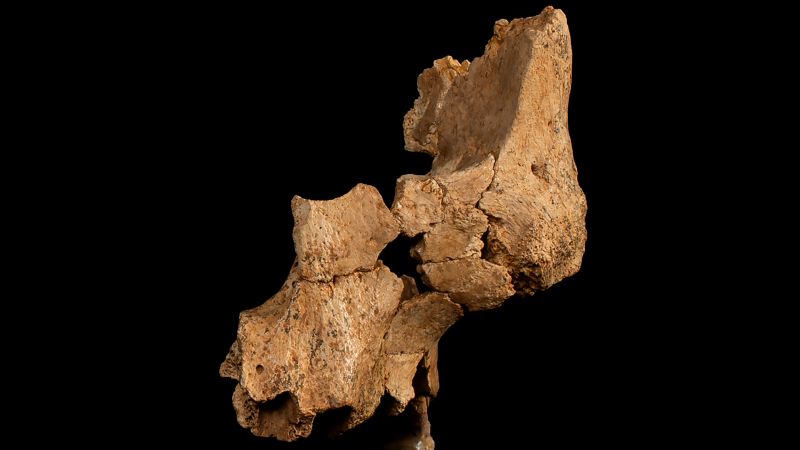In a groundbreaking discovery that reshapes our understanding of human evolution in Europe, fossil fragments excavated from a cave in northern Spain have revealed a previously unknown human population that thrived over 1.1 million years ago. This fascinating revelation stems from research conducted at Sima del Elefante, a critical archaeological site located within the Atapuerca Mountains. The significance of these findings is amplified by the fact that they represent the earliest known human fossil remains found in Western Europe to date.
The partial skull unearthed during the 2022 excavation comprises the left side of an adult hominin’s face, suggesting the presence of a distinct population in Europe during this period. Despite the excitement surrounding this discovery, researchers have been unable to definitively classify the species to which these remains belong. Preliminary analyses and the published study in the prestigious journal “Nature” lean towards identification as Homo erectus, a species that has been extensively documented in Africa and Asia but lacks definitive evidence of its existence in Europe until now.
María Martinón-Torres, the director of CENIEH (Spain’s National Human Evolution Research Centre), remarked in a press briefing that this conclusion about the fossils is a cautious yet daring proposal. She emphasized the importance of remaining open to the possibility of this population belonging to an entirely different species. The findings have sparked significant excitement and discussion within the paleoanthropological community regarding the implications for our understanding of human evolution.
The Atapuerca Mountains have long been a focal point for paleoanthropological research, yielding significant discoveries since the mid-1990s when scientists identified Homo antecessor from roughly 80 fossils recovered from a nearby site called Gran Dolina. This species was considered the earliest known human inhabitant of Western Europe, predating the arrival of Neanderthals by around 400,000 years. However, the recently discovered skull morphology diverges from that of Homo antecessor, which had a notably modern-looking face more akin to present-day Homo sapiens.
Martinón-Torres highlighted the distinctive features of the newly discovered hominin which exhibit a forward-projecting facial structure reminiscent of Homo erectus fossils. This characteristic differs from the flatter, vertically-aligned faces of Homo antecessor. Moreover, the research team revisited a partial jawbone found in Sima del Elefante in 2007, subsequently proposing that it may belong to the same unique population of prehistoric humans.
The species classification remains tentative, with researchers settling on the designation of Homo affinis erectus to reflect the close relationship to known species while recognizing the distinct differences. Martinón-Torres expressed optimism, stating that the excavation efforts at Sima del Elefante are ongoing, and there could be more surprises waiting to be discovered below the currently excavated layers.
This discovery has sparked significant interest, and Chris Stringer, a research leader in human evolution at London’s Natural History Museum, described the unveiling of these fossils as a vital find for the field. Stringer noted the unique facial traits distinct from Homo antecessor and modern humans, suggesting a closer resemblance to Homo erectus. However, he aligned with the study’s authors in emphasizing the need for caution in species identification given the incompleteness of the remains.
The research methodology incorporated traditional fossil analysis techniques combined with advanced imaging and 3D reconstruction, resulting in a comprehensive evaluation of the facial structure. Although a direct dating of the fossils was not possible, sediment analysis techniques allowed researchers to roughly estimate the fossils’ age between 1.4 million and 1.1 million years.
Additionally, the excavation at Sima del Elefante uncovered animal bones bearing cut marks along with stone tools indicative of the butchering of carcasses. This evidence suggests that the ancient hominin population inhabited an environment characterized by woodlands and wet grasslands, teeming with potential prey, thereby augmenting the narrative of human existence in prehistoric Europe and solidifying the Atapuerca region’s status as an essential site for understanding evolutionary history.












